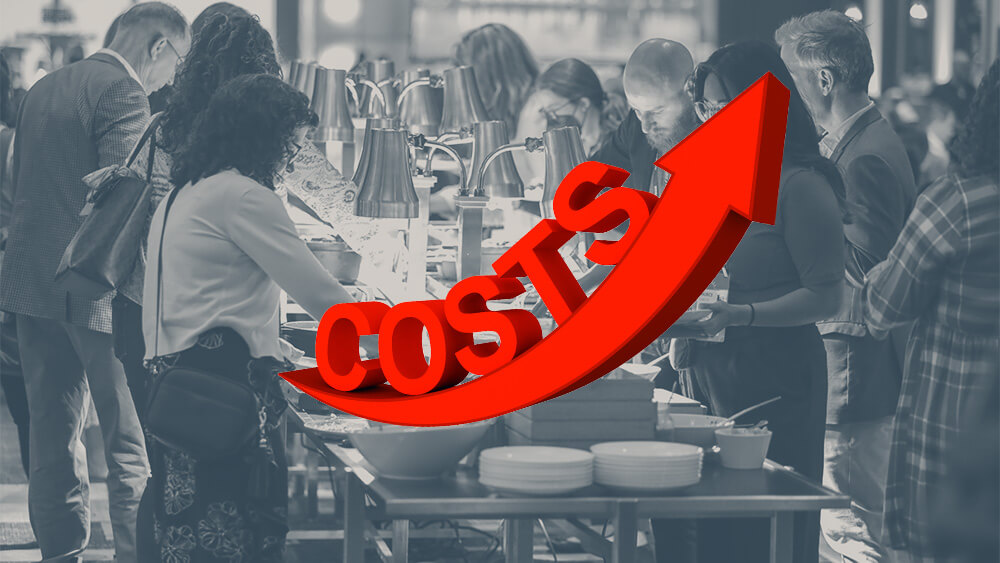
Rising costs — for food and beverage, AV and production, and speakers/entertainment — are challenging planners who want to meet attendee expectations at their events.
First, the bad news: Full-year performance for 2023 participation and revenues is expected to be around 10 percent below 2019. But the Center for Exhibition Industry Research (CEIR) says next year’s performance is expected to eclipse 2019 results by nearly 4 percent. (One can only hope!)
Whether your results are better or worse than the CEIR index, consider it a helpful benchmarking metric to share with your organization’s leadership. For most business event professionals, rebuilding attendance and overall revenue is priority one.
Competing Priorities
The CEIR index gives us a good view of top-line performance: participation and revenue. Business event professionals are also challenged to deliver net income to the bottom line. The two tensions to accomplishing this priority include 1) increased attendee expectations vs. rising costs, and 2) the mandate to innovate the event experience vs. a limited workforce and capacity.
There is no one-size-fits-all or silver bullet solution for these tensions, but it is helpful to know that you’re not alone.
Attendee Expectations vs. Rising Costs
The three expense categories attendees value the most are also the ones that are escalating in cost faster than inflation: food & beverage, AV + production, and speakers/entertainment. Any cutbacks made in these categories can negatively impact your attendee value proposition. In addition to negotiating and locking in pricing, consider these cost-reduction tactics:
- Decrease the event length by several hours or a half-day.
- Use industry speakers for one of your keynote slots.
- Cut back on general session staging — or optimize it by using it more.
- Reduce the number of concurrent sessions by 10–20 percent.
- Eliminate the livestreaming of sessions.
Innovate vs. Limited Workforce/Capacity
Quite a few of our clients are having difficulty finding qualified professionals to fill mid- and entry-level planner positions. Candidate expectations for title, compensation, and work flexibility are at all-time highs. This is having a trickle-down effect, creating increased workloads and stress for the seasoned event team members. As a result, event innovation often takes a backseat. Here are examples of how some leaders are working through this issue:
- Protect your top performers. Find out what’s important to each team member and proactively improve their title, compensation, and/or work flexibility.
- Prune the bush. If you have team members who are underperforming and unlikely to improve with coaching and training, bite the bullet and make a change.
- Bring in a contractor. Good contractors are in high demand. Tap your network and look for recently retired event professionals.
- Swap it out. For every innovative new idea you decide to implement, pick something else to put on the stop-doing list.
Leading vs. Lagging Indicators
One of the post-pandemic trends we’re starting to see emerge is that event exhibitor and sponsor revenue is lagging attendance recovery. To offset this decline, some associations are re-assessing and expanding their annual partner programs. Top investors often want to be viewed as thought leaders and supporters throughout the year. In many cases, it makes sense to consolidate business development and fulfillment resources and organize them around your customers instead of your products.
ON THE WEB: Read my blog post from 2020 on the event recovery food chain.
Dave Lutz, CMP, is managing director of Velvet Chainsaw Consulting.
